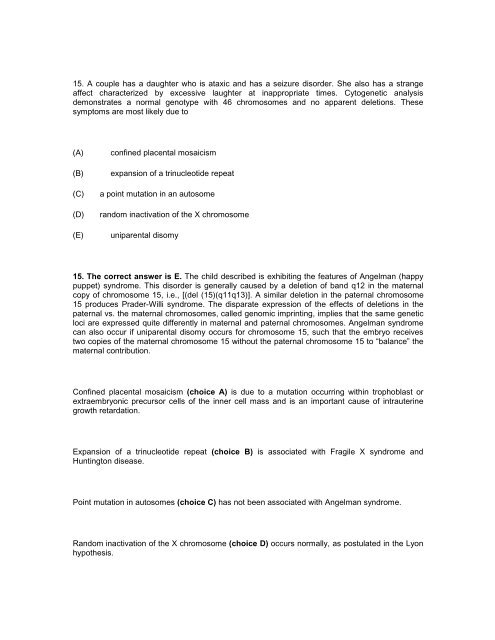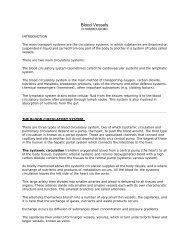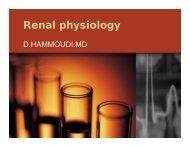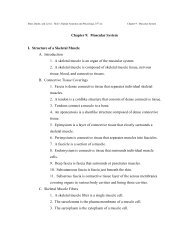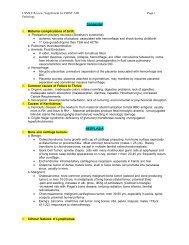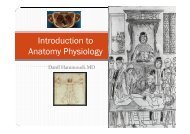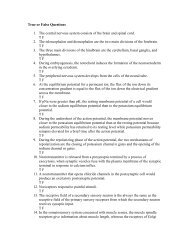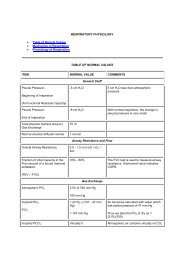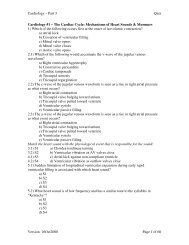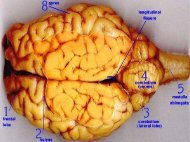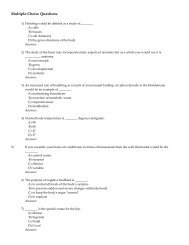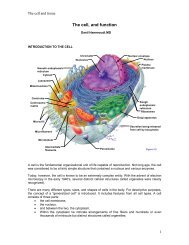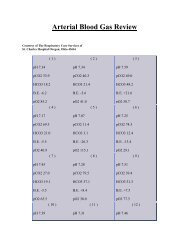L:\usmle review 7 - Sinoe medical homepage.
L:\usmle review 7 - Sinoe medical homepage.
L:\usmle review 7 - Sinoe medical homepage.
Create successful ePaper yourself
Turn your PDF publications into a flip-book with our unique Google optimized e-Paper software.
15. A couple has a daughter who is ataxic and has a seizure disorder. She also has a strange<br />
affect characterized by excessive laughter at inappropriate times. Cytogenetic analysis<br />
demonstrates a normal genotype with 46 chromosomes and no apparent deletions. These<br />
symptoms are most likely due to<br />
(A)<br />
(B)<br />
(C)<br />
(D)<br />
(E)<br />
confined placental mosaicism<br />
expansion of a trinucleotide repeat<br />
a point mutation in an autosome<br />
random inactivation of the X chromosome<br />
uniparental disomy<br />
15. The correct answer is E. The child described is exhibiting the features of Angelman (happy<br />
puppet) syndrome. This disorder is generally caused by a deletion of band q12 in the maternal<br />
copy of chromosome 15, i.e., [(del (15)(q11q13)]. A similar deletion in the paternal chromosome<br />
15 produces Prader-Willi syndrome. The disparate expression of the effects of deletions in the<br />
paternal vs. the maternal chromosomes, called genomic imprinting, implies that the same genetic<br />
loci are expressed quite differently in maternal and paternal chromosomes. Angelman syndrome<br />
can also occur if uniparental disomy occurs for chromosome 15, such that the embryo receives<br />
two copies of the maternal chromosome 15 without the paternal chromosome 15 to “balance” the<br />
maternal contribution.<br />
Confined placental mosaicism (choice A) is due to a mutation occurring within trophoblast or<br />
extraembryonic precursor cells of the inner cell mass and is an important cause of intrauterine<br />
growth retardation.<br />
Expansion of a trinucleotide repeat (choice B) is associated with Fragile X syndrome and<br />
Huntington disease.<br />
Point mutation in autosomes (choice C) has not been associated with Angelman syndrome.<br />
Random inactivation of the X chromosome (choice D) occurs normally, as postulated in the Lyon<br />
hypothesis.


